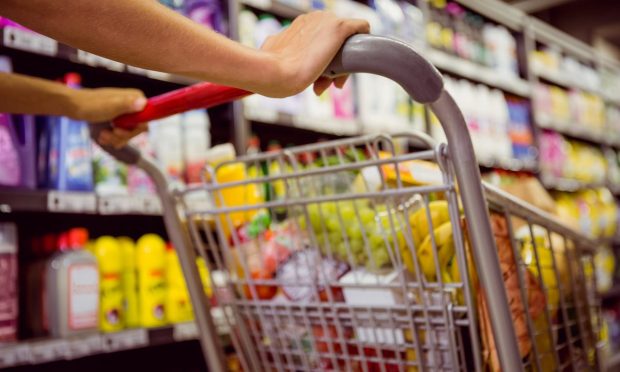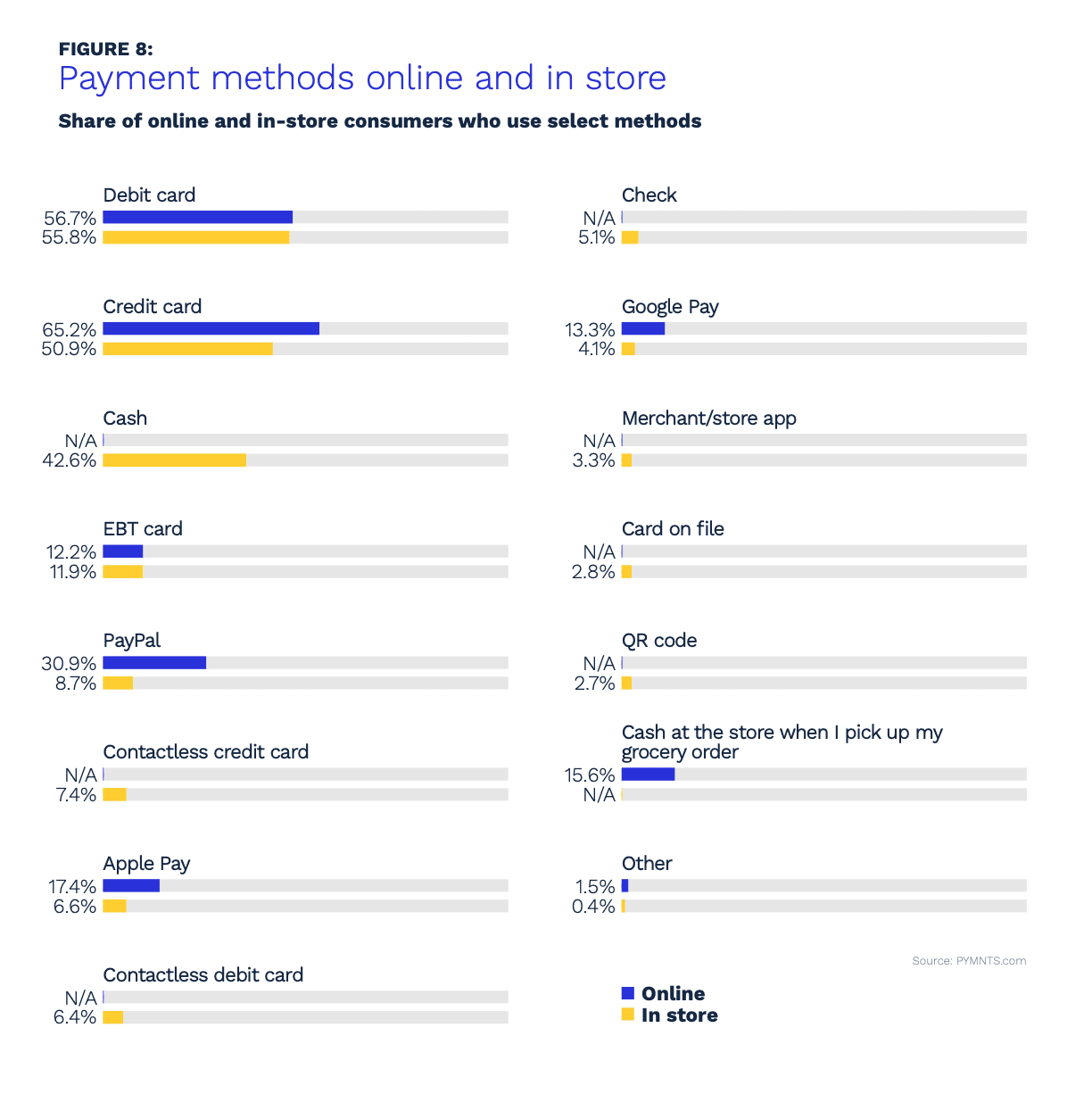New Study Finds Grocery Shoppers Favoring Physical Stores and Digital Payments

What pandemic? It’s a question you might ask when analyzing responses to What Consumers Expect From Their Grocery Shopping Experiences, a PYMNTS and ACI Worldwide collaboration.
According to the new census-balanced survey of over 2,300 U.S. consumers, the majority of grocery shopping still takes place inside grocery stores, and not online.
Per the study, “Despite the digital shift that has taken place over the last 18 months, shopping at physical grocery stores remains prevalent, as 94 percent report shopping in stores at least some of the time. Consumers are nearly twice as likely to have shifted to digital channels to shop for retail products online than they are to have shifted for grocery items.”
When it comes to the digital shift in grocery, on the other hand, it’s quite real, with researchers finding that 34 percent of consumers “shop for at least some of their groceries online, and the share jumps to 57 percent among millennials.” Among these cohorts, curbside pickup “is nearly as popular a digital channel as grocery delivery, as close to 20 percent employ each.”
This gets even more interesting as we track how digital-first grocery customers’ shopping behaviors align with preferred payment methods.
Motivated more by mobility and digital ease, researchers found that 55 percent of those who buy groceries online “make their purchases through mobile devices, and this finding corresponds to a wide use of payment methods. Thirty-one percent of online grocery shoppers use PayPal, while 22 percent use other mobile wallets, such as Apple Pay or Google Pay.”

See: What Consumers Expect From Their Grocery Shopping Experiences
Digital Shift in Grocery Sector Stays Fresh
A burning question since the digital shift began in earnest in 2020 is whether it will last.
What Consumers Expect From Their Grocery Shopping Experiences provides answers, noting the “pandemic was a catalyst for the long-term adoption of new habits,” and adding, “More than three-quarters of those who increased their use of digital grocery shopping channels said they did so because digital channels provide an easier and more convenient way to shop. Avoiding COVID-19 was a less common motivation, cited by 59 percent of shoppers.”
Compare that to October 2020, when 64 percent of grocery shoppers cited virus fears.
This shift is attended by other changes, such as getting one’s groceries once ordered.
“Digital technology has opened several channels to grocery shopping that have caught on with consumers,” according to the new study. “Home delivery is the most common and preferred channel, yet curbside pickup is not far behind: 20 percent use it, and 7 percent prefer it. Interestingly, the use of and preference for aggregators — services that offer delivery services from multiple stores — is considerably lower than other channels. These findings suggest that grocery shoppers have affinities for their favorite stores and wish to maintain these connections when using digital channels, whether through direct delivery or curbside pickup.”
Read: What Consumers Expect From Their Grocery Shopping Experiences

Playing Favorites
While the data shows consumers have definite favorite stores and payment methods, competing retailers can do more to capitalize on trends as the shift takes on permanence.
For example, the study states, “Among those who have purchased nonfood products at their favorite grocery stores, 27 percent say these items were an incentive for them to visit more often over the last 18 months. The effect is particularly strong for millennials: 49 percent believe nonfood offerings motivated them to make more trips.”
However, 56 percent of consumers said they would forego favorite stores “if they could obtain nonfood products and services. One-third would be ‘somewhat’ likely to try new stores in this scenario, and 23 percent would be ‘very’ or ’extremely’ likely to do so.”
Similarly, payments options are almost as big a draw as convenience, at least for the digerati.
“Payment variety and flexibility at checkout is always an important part of online commerce, but they are especially crucial for mobile users, who tend to place a premium on one-touch, seamless options like mobile wallets,” according to What Consumers Expect From Their Grocery Shopping Experiences, with online credit card use pegged just north of 65 percent and debit use at roughly 57 percent.
As for other mainstream methods, 31 percent are using PayPal, 17 percent use Apple Pay, and 13 percent use Google Pay, researchers found, adding that EBT cards are also used by 12 percent online, “about the same share who report using them in store.”

Get the report: What Consumers Expect From Their Grocery Shopping Experiences
